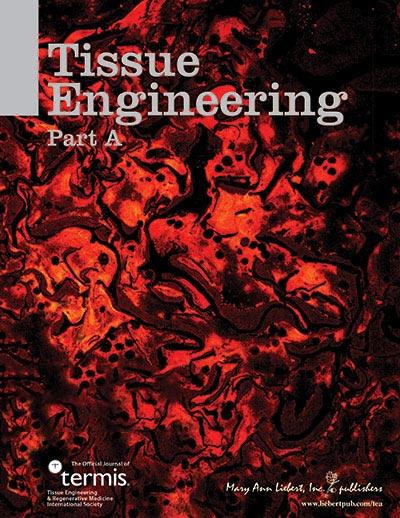
Credit: Mary Ann Liebert, Inc., publishers
New Rochelle, NY, February 7, 2020–Two distinct approaches are predominantly used to recapitulate physiologically relevant in vitro human organ models. Organoids use stem cells to grow self-assembled replica organs through directed differentiation, whereas the organ-on-a-chip approach involves microfluidics and carefully controlled, 3D-printed architecture and assembly. It is difficult to assess and compare each strategy’s overall influence with the increasing pace of discovery, but a new study using bibliometric analysis of nearly 3,000 research and review articles illuminates research trends. This work is reported in Tissue Engineering, a peer-reviewed journal from Mary Ann Liebert, Inc., publishers. Click here to read the article for free on the Tissue Engineering website through March 7, 2020.
In “Global Trends of Organoid and Organ-on-a-chip in the Past Decade: A Bibliometric & Comparative Study”, Pu Chen, PhD, Wuhan University School of Basic Medical Sciences, China, and coauthors present the results of their literature-based investigation. The authors identify research hotspots and their evolution, different scientific areas being influenced, and global trends for both organoid and organ-on-a-chip models. A thorough record is included of the most cited studies, influential authors and institutions, and the most relevant journals for each technique. Ultimately, the authors provide a useful framework for appreciating the unique trajectory of both approaches and also reveal a growing trend of combining the two methods.
“Organoids and Organ-on-a-chip mimic the cellular organization and physiology of native tissue,” says Tissue Engineering Methods Co-Editor-in-Chief John A. Jansen, DDS, PhD, Professor and Head, Radboud University Medical Center, Netherlands. “Therefore, they are one of the major breakthrough technology platforms for tissue engineering studies.”
###
About the Journal
Tissue Engineering is an authoritative peer-reviewed journal published monthly online and in print in three parts: Part A, the flagship journal published 24 times per year; Part B: Reviews, published bimonthly, and Part C: Methods, published 12 times per year. Led by Co-Editors-in-Chief Antonios G. Mikos, PhD, Louis Calder Professor at Rice University, Houston, TX, and John P. Fisher, PhD, Fischell Family Distinguished Professor & Department Chair, and Director of the NIH Center for Engineering Complex Tissues at the University of Maryland, the Journal brings together scientific and medical experts in the fields of biomedical engineering, material science, molecular and cellular biology, and genetic engineering. Leadership of Tissue Engineering Parts B (Reviews) and Part C (Methods) is provided by Katja Schenke-Layland, PhD, Eberhard Karls University, Tübingen, Heungsoo Shin, PhD, Hanyang University; and John A. Jansen, DDS, PhD, Radboud University, and Xiumei Wang, PhD, Tsinghua University respectively. Tissue Engineering is the official journal of the Tissue Engineering & Regenerative Medicine International Society (TERMIS). Complete tables of content and a sample issue may be viewed on the Tissue Engineering website.
About the Publisher
Mary Ann Liebert, Inc., publishers/ is a privately held, fully integrated media company known for establishing authoritative peer-reviewed journals in many promising areas of science and biomedical research, including Stem Cells and Development, Human Gene Therapy, and Advances in Wound Care. Its biotechnology trade magazine, GEN (Genetic Engineering & Biotechnology News), was the first in its field and is today the industry’s most widely read publication worldwide. A complete list of the firm’s 80 journals, books, and newsmagazines is available on the Mary Ann Liebert, Inc., publishers website.
Media Contact
Kathryn Ryan
[email protected]
914-740-2250
Original Source
https:/
Related Journal Article
http://dx.




